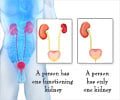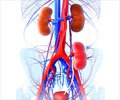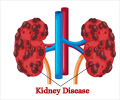A report says that avoiding HLA-DR mismatching appears to be beneficial in pediatric kidney transplant patients

To examine the relationship between HLA-DR mismatching and rejection, graft survival and sensitization in pediatric kidney transplant patients, Lan T. Vu, M.D., and colleagues from the University of California at San Francisco, conducted a retrospective cohort study of 178 pediatric patients who underwent primary kidney transplantation with daclizumab induction therapy (to prevent organ rejection) at the University of California, San Francisco between 1997 and 2006.
One year after transplantation, 35 percent of the patients experienced rejection and at five year follow-up the frequency of rejection was 55 percent. Patients with 1- or 2-HLA-DRB1 mismatches had 1.7 times greater odds of rejection than patients with no HLA-DRB1 mismatches. "This single-center study demonstrated that HLA-DRB1 mismatching increased the risk of allograft rejection by approximately 70 percent in children," write the authors.
Additionally, the 1- and 5-year graft survival rates for this study group were 97 percent and 82 percent respectively, and the authors found that the degree of HLA-DRB1 mismatches were not significantly related to graft failure. However, patients with a history of rejection had 7.7 times greater odds of graft failure than those who had not previously had an episode of rejection.
"In conclusion, this study showed that HLA-DRB1 mismatch was a risk factor for rejection and that rejection was a strong predictor of graft failure and sensitization in children," the authors write. "Based on the high incidence of rejection and sensitization seen with HLA-DR–mismatched kidneys observed in this series, we advocate expansion of the current artificial boundaries of donor pools to facilitate better matching and outcomes for young recipients."
Advertisement













